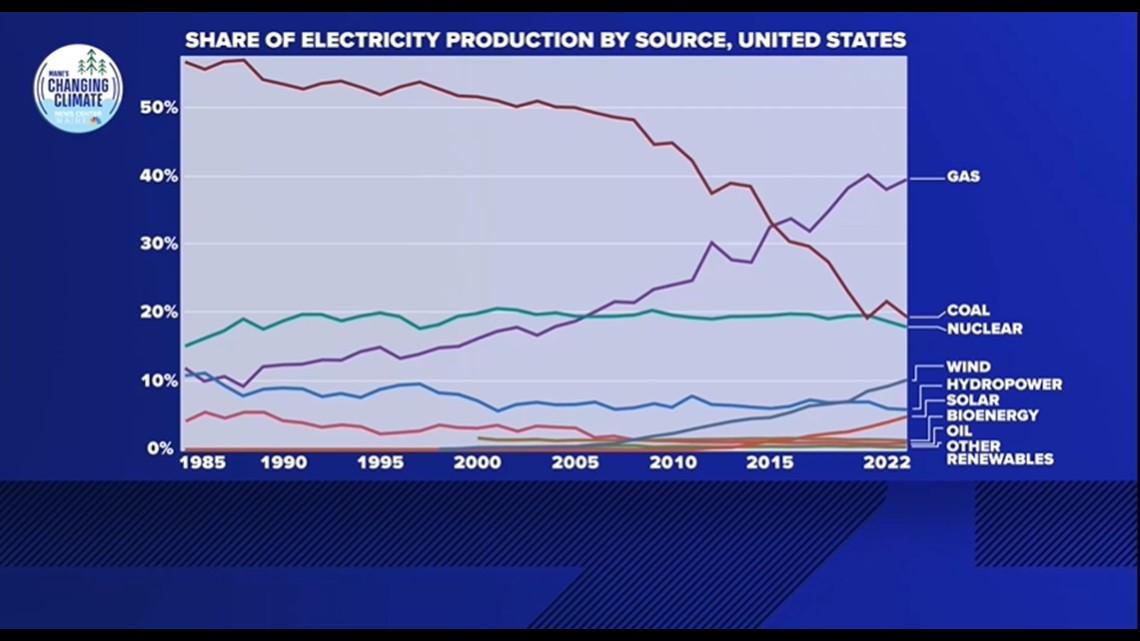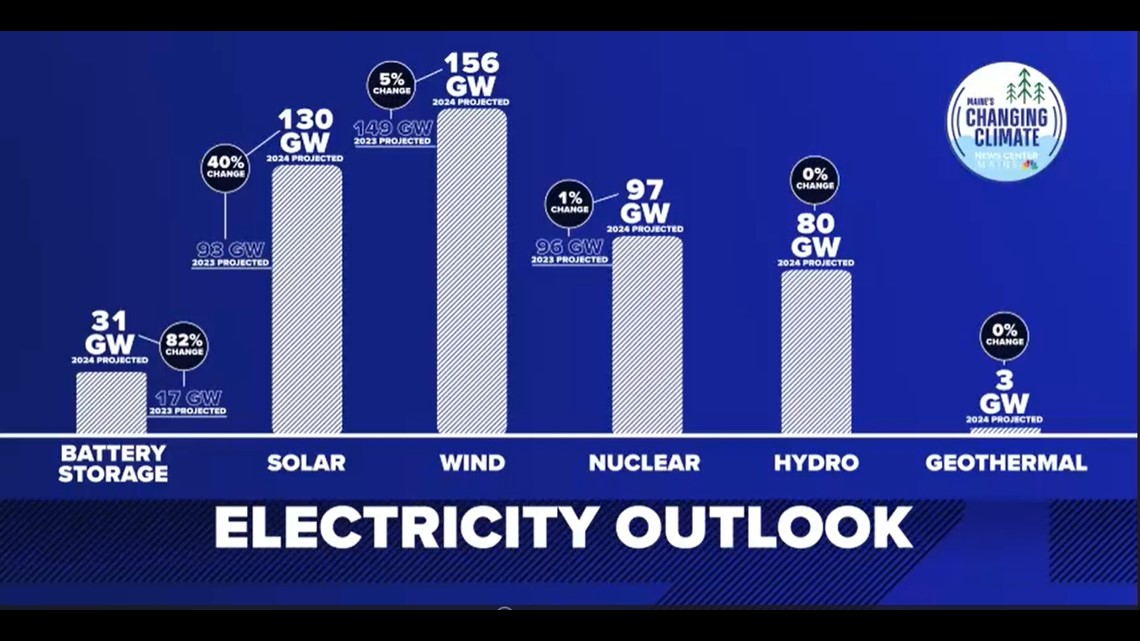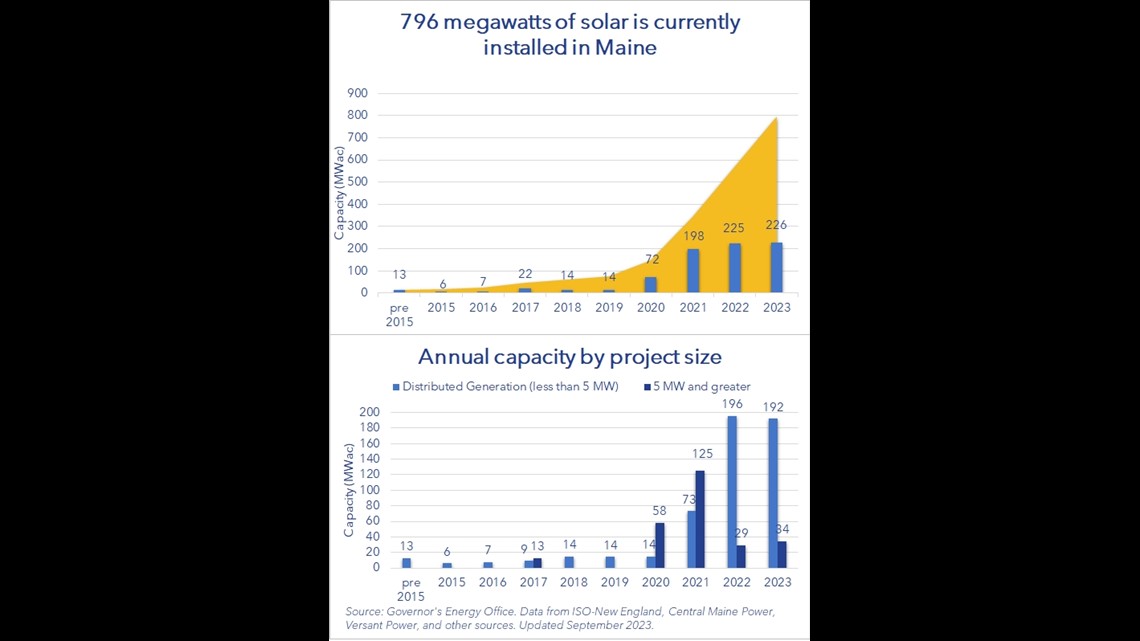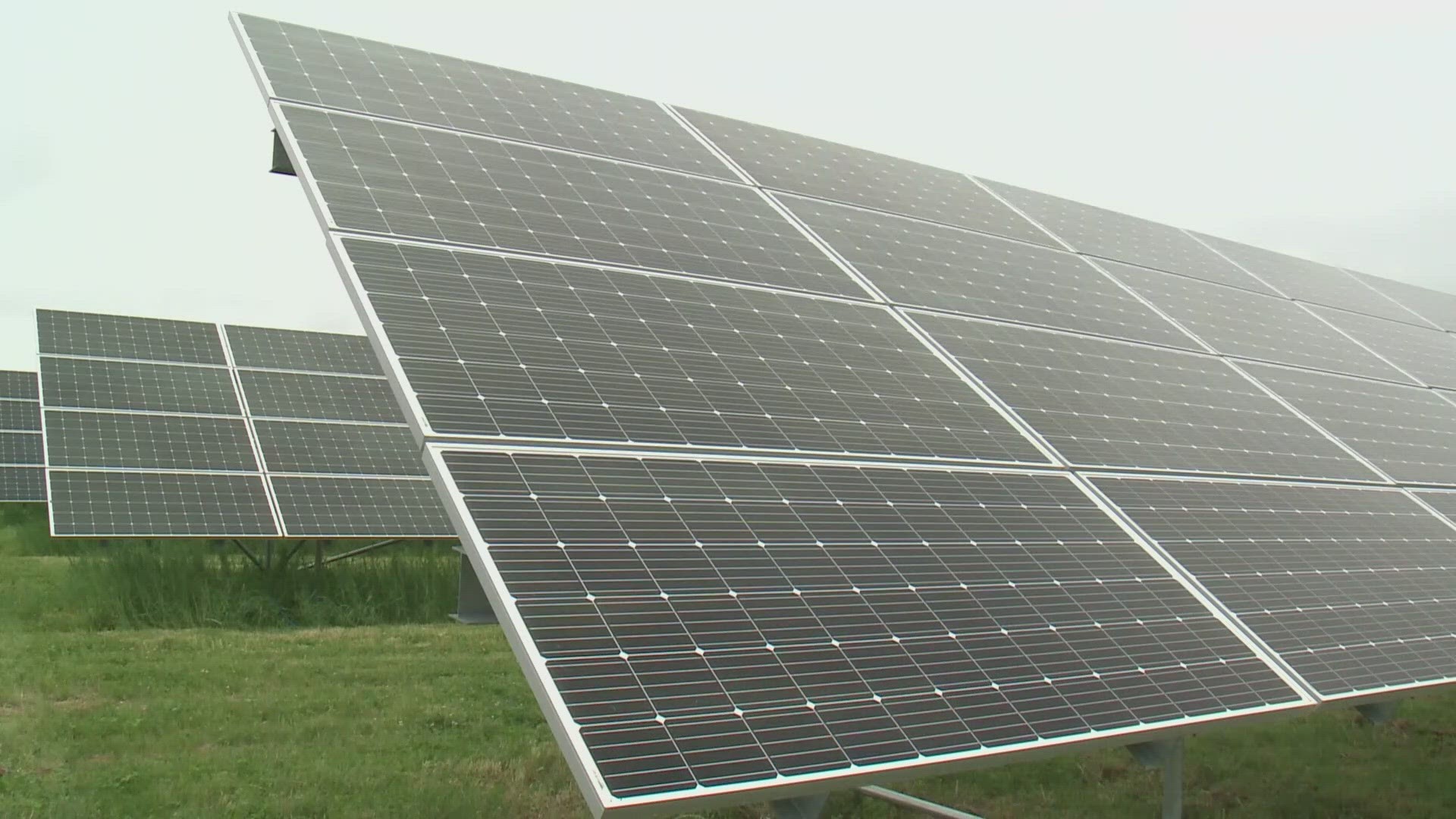PORTLAND, Maine — The way we make electricity in this country has changed dramatically over the years.
For example, in 2000 coal was still king. Then, 52 percent of the electricity generation in America came from coal with only 0.5 percent stemming from renewables. As of 2023 coal is down to 17 percent while renewables were up to 22 percent, according to data from the U.S. Energy Information Administration.
Here in Maine, our electricity comes from 32 percent natural gas, 0.4 percent coal, and 64 percent renewables, according to U.S. Energy Information Administration, and the remaining 3.5 percent comes from oil and other sources.
But what’s in store for 2024?


According to the National Public Utilities Council and U.S. Energy Information Administration, which issue a report together, it will be a big year for solar.
Generation from solar is expected to increase 40 percent from 93 giga watts to 130 gigawatts. Wind energy, however, is expected to grow at a much slower rate of 5 percent. This is largely because of higher initial capital costs and permitting challenges. Permitting has been particularly challenging for offshore wind, and it's an issue Maine is weighing right now.


Another category expected to see a big increase is battery storage. It's expected to surge 80 percent this year.
Battery storage is essential if renewables are to someday dominate our power grid. This is because production can ebb and flow with the weather: There will be less power supplied on a cloudy day versus a sunny day, but the demand will stay the same. There are two main ways around this. One is to store the excess energy in batteries for a literal rainy day. The other is an interconnected national grid that can feed a rainy Northeast with a sunny desert southwest, for example.
Maine seems poised to follow the national trend by leaning into solar. Just in the past three years the Pine Tree State has gone from 150 megawatts of solar generation to nearly 800 megawatts as of 2023.


This increase in renewables isn’t entirely driven by concern for the environment. It's about the money. The unsubsidized per kilowatt cost of solar has plummeted in recent years, down a whopping 78 percent since 2009, which proves green energy can also be cost-effective.

